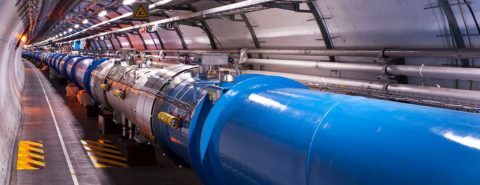
The CERN Large Hadron Collider, the LHC, is the world’s highest-energy particle accelerator. It smashes together protons with energies almost 7,000 times their intrinsic energy at rest to explore nature at distances as small as 1 part in 100,000 of the size of an atomic nucleus. These large energies and small distances hold clues to fundamental mysteries about the origin and nature of the elementary particles that make up matter.
The LHC is a high-performance machine, a Formula 1 race car, not a Toyota. As such, it needs to spend time in the shop. The previous run of the LHC ended in December 2018. Since then, scientists and technicians have installed numerous fixes and improvements to both the accelerator and the particle detectors. In mid-April, the LHC began a series of final tests and tunings, raising the collision energy from 13 TeV to 13.6 TeV, moving closer to the design energy of 14 TeV. On 5 July the new run of>Wikimedia Commons (CC BY-SA 3.0)

Published on August 29, 2022 02:30
